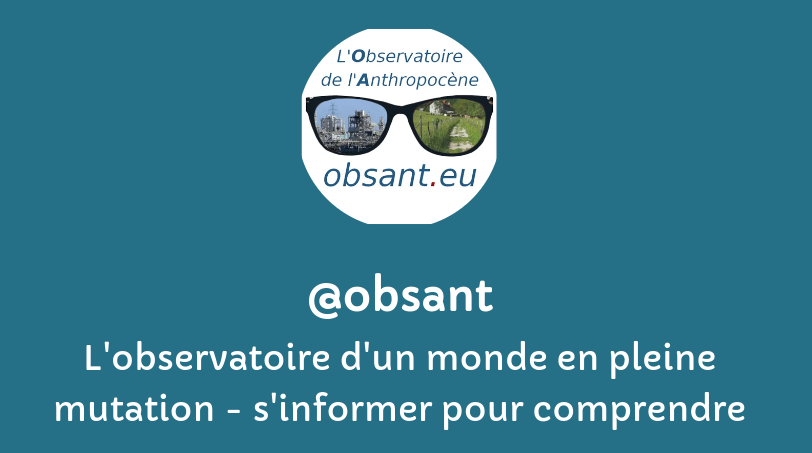Uniquement les Articles de la décennie 2020
Les champs auteur(e)s & mots-clés sont cliquables. Pour revenir à la page, utilisez le bouton refresh ci-dessous.
filtre:
wildlife
Russia’s war in Ukraine has encouraged a rapid increase in the deployment of drones that use fibre optic cables to protect them from being jammed or downed by electronic warfare: the drones trail kilometres of plastic cable across frontlines. In this post Leon Moreland explores the environmental risks posed by this new form of battlefield plastic pollution.
Le ministre de l’intérieur américain a notamment annoncé le rétablissement d’un programme permettant d’exploiter le pétrole et le gaz dans l’ensemble de l’Arctic National Wildlife Refuge, une aire protégée qui s’étend sur plus de 630 000 hectares.
The average size of monitored wildlife populations has shrunk by 73% since 1970.
Human activity has caused species groups to go extinct 35 times faster than they have over the past 500 years
Protecting and enhancing populations of key wildlife species across the world could significantly enhance natural carbon capture and storage and play a critical role mitigating climate change, according to new YSE-led research.
The steady destruction of wildlife can suddenly tip over into total ecosystem collapse, scientists studying the greatest mass extinction in Earth’s history have found. Many scientists think the huge current losses of biodiversity are the start of a new mass extinction. But the new research shows total ecosystem collapse is “inevitable”, if the losses are not reversed, the scientists said.
Small patches of land given over to wildlife-friendly planting can make a big difference to pollinator conservation, a new study suggests. Bee and other pollinator populations in Europe and North America are in decline due to a range of factors including habitat loss and insufficient flowers for food.
abs_empty
Pet cats kill songbirds by the million, as well as rodents and other wildlife. But how much of a threat do they really pose, and should they be kept indoors? Expert opinion is divided
Humankind is revealed as simultaneously insignificant and utterly dominant in the grand scheme of life on Earth by a groundbreaking new assessment of all life on the planet. The world’s 7.6 billion people represent just 0.01% of all living things, according to the study. Yet since the dawn of civilisation, humanity has caused the loss of 83% of all wild mammals and half of plants, while livestock kept by humans abounds.
Global shipping is moving invasive species around the world. Can world governments agree on necessary preventative measures?
The ivory-billed woodpecker, along with 22 other species of birds, fish, mussels and other wildlife, is set to be declared extinct and removed from the endangered species list, US federal wildlife officials announced Wednesday.
It is hard to believe it’s happening again, even harder to believe that so few people seem to know or care. A massive famine is unfolding in Tigray in northern Ethiopia. Five million people are in need of food aid, and perhaps 900,000 are already starving.
Situated deep in the middle of Brazil, Xingu Indigenous Park encompasses some of the most biodiverse rainforest in the country and is home to dozens of Indigenous communities and a multitude of wildlife. It also sits in the country’s infamous “Arc of Deforestation,” a vast swath of land heavily degraded by industrial agriculture that stretches from one side of Brazil to the other and which is punctuated in just a few places by islands of protected forest.
The root cause of pandemics – the destruction of nature – is being ignored, scientists have warned. The focus of world leaders on responding to future outbreaks overlooks the far cheaper and more effective strategy of stopping the spillover of disease from animals to humans in the first place, they have said. The razing of forests and hunting of wildlife is increasingly bringing animals and the microbes they harbour into contact with people and livestock. About 70% of new infectious diseases have come from animals, including Covid-19, Sars, bird flu, Ebola and HIV.
abs_empty
Analysis shows 500 species on brink of extinction – as many as were lost over previous century
Only a decade or two ago it was widely thought that tropical forests and intact natural environments teeming with exotic wildlife threatened humans by harboring the viruses and pathogens that lead to new diseases in humans like Ebola, HIV and dengue. But a number of researchers today think that it is actually humanity’s destruction of biodiversity that creates the conditions for new viruses and diseases like COVID-19, the viral disease that emerged in China in December 2019,
![]()



